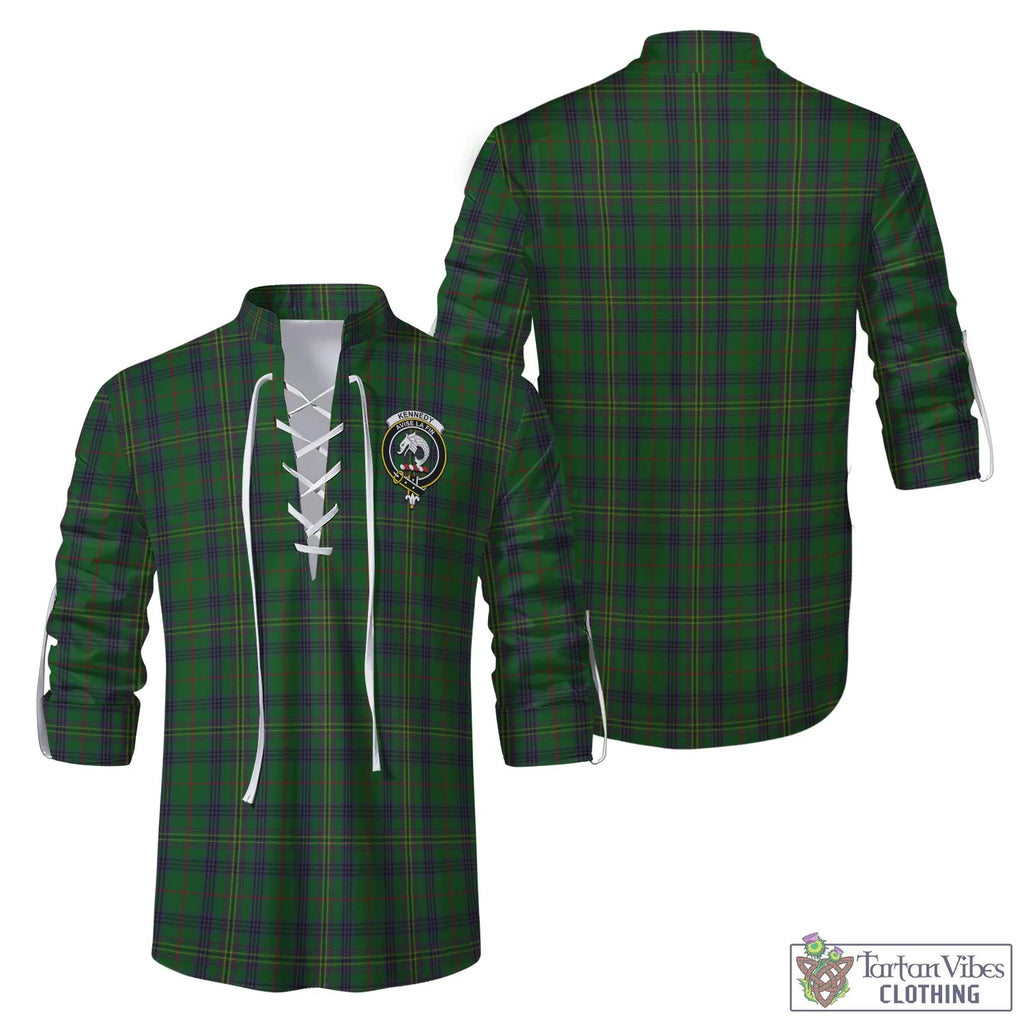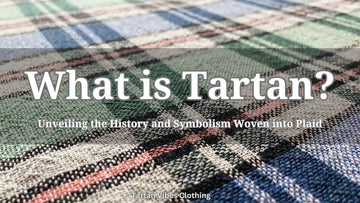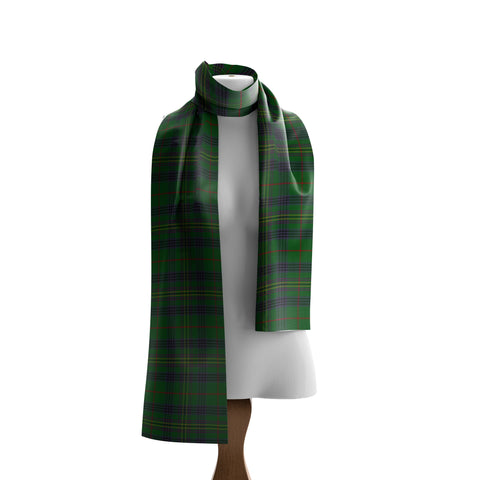What is a Tartan? Unveiling the History and Symbolism Woven into Plaid
by Marcus Harris on Mar 12, 2024
Table of Content
What is a Tartan?
Tartan is more than just a colorful patterned cloth. It's a woven design, traditionally made from wool, with intersecting horizontal and vertical bands in various colors. Each Scottish tartan pattern tells a story through its unique combination of colors, creating a visual record of Scottish heritage. Beyond its use in kilts, tartan has served as a symbol of clans (family groups), regions, and even historical events. Modern tartans come in a wide variety, reflecting personal style and creativity.

Origins of Plaid: Tracing the Tartan History
Tartan's rich history mirrors the complexity of its patterns. From its early roots as a simple, functional cloth, possibly used for blankets or throws, tartan evolved into a symbolic marker of identity by the 16th century in Scotland. Weaving techniques became more sophisticated, allowing for the creation of the elaborate sett patterns we know today.
Tartan's journey extends far beyond the Scottish Highlands. The wearing of tartan was even banned for a time after the Jacobite Rebellion (1746), highlighting its importance as a symbol of Scottish identity. Today, tartan patterns have transcended their clan-based origins to become a popular design element in fashion and accessories. For example, tartan has been featured in the collections of renowned designers, showcasing its enduring appeal in modern culture. Its ability to represent both heritage and high fashion speaks to the versatility and universal appeal of tartan's timeless design.
Demystifying Tartan: Tartan Identification and Significance
Defining Tartan: Beyond Aesthetic Appeal
The beauty of tartan lies not just in its visual appeal but in its complexity and the depth of its cultural connotations. To be officially recognized as tartan, a pattern must meet precise criteria, including a unique Sett pattern that adheres to traditional Tartan identification methods. This ensures each Tartan design remains a true representation of its ancestral roots, embodying the Tartan significance within each thread.
Tartan Plaid vs. Regular Plaid: Deciphering the Differences
While Tartan Plaid and regular Plaid might appear similar to the untrained eye, the former carries a wealth of tradition and identity specific to Scottish clans. Unlike the broader category of plaid, Scottish tartan is tied to history and lineage, with each Tartan pattern serving as a badge of honor and belonging.
Famous Tartans: A Legacy Woven in Threads
The Black Watch Tartan: A Symbol of Military Prowess
The Black Watch tartan is an iconic pattern, its dark hues of blue, green, and black transcending mere aesthetics. Rooted in military tradition, it originated as the uniform of the Black Watch regiments. This pattern exemplifies the enduring connection between tartan and Scottish valor, duty, and heritage.
The Royal Stewart Tartan: A Regal Connection
Distinguished by its vibrant red base and intricate design, the Royal Stewart tartan speaks volumes about the significance of tartan in Scottish royalty. Not only do members of the royal family adorn themselves in this pattern during formal occasions, but it also highlights the enduring connection between tartan and national identity. Consider including an image of this famous tartan to showcase its beauty.
The Cultural Tapestry of Tartan Fabric
1. Tartan in Traditional Attire: Weaving Identity into Clothing
Tartan fabric plays a pivotal role in Traditional Scottish clothing, particularly in the crafting of kilts and shawls, each Tartan pattern serving as a vibrant emblem of cultural identity and pride.
Kilts: Icons of Scottish Heritage, The kilt, emblematic of Scottish tartan, integrates Tartan colors and patterns to signify connections to specific clans. This traditional garment, steeped in Tartan heritage, is more than mere attire; it's a narrative woven from the very fabric of Scottish history, cherished across generations.
Shawls and Accessories: Embodying Tradition Beyond kilts, Tartan accessories like shawls, ties, and scarves carry the essence of Tartan symbolism into everyday fashion. These items, rich with Tartan variations, allow individuals to showcase their heritage and affiliation in a multitude of contexts, blending Tartan fashion seamlessly with personal identity.
2. Tartan's Symbolism in Historical Events: Threads of History
The Tartan significance extends to its role in historical events, symbolizing unity, resistance, and the enduring spirit of the Scottish people.
Battles: The War Paint of Clan Allegiance. In the throes of battle, Tartan patterns were not merely decorative but served as crucial identifiers, with Clan tartans distinguishing allies from foes. This use of tartan underscores its role as a powerful emblem of allegiance and identity, woven into the very fabric of Scottish history.
Political Movements: A Fabric of Resistance. Throughout periods of upheaval, the Tartan fabric has emerged as a symbol of resistance, notably during the Highland Clearances and the Jacobite uprisings. The act of wearing tartan, forbidden at times, became a defiant expression of cultural identity and resilience, showcasing the deep-seated Tartan heritage and its impact on Scottish nationalism and solidarity.
Other Significant Moments: Beyond Borders Tartan's, influence extends beyond Scotland, marking it as a global symbol of heritage and unity. Whether in the context of international conflicts or cultural exchanges, tartan remains a poignant reminder of the interconnectedness of tradition and modernity, embodying the rich tapestry of Tartan history and its relevance in contemporary culture.
Conclusion
In exploring "What is a tartan?," we uncover a world where fabric transcends its physical form to embody the rich mosaic of Scottish culture, heritage, and identity. Through each Tartan pattern and color, we celebrate the diversity and significance of tartan, recognizing it as a universal symbol that bridges the past with the present, tradition with modernity. Tartan is not just fabric; it's a living, breathing narrative of Scotland itself, woven into the very core of its people and their legacy.
Frequently Asked Questions
Is tartan the same as plaid?
Not quite! Tartan refers specifically to Scottish woven patterns with a rich history and connection to clans. Plaid is a broader term encompassing any kind of checkered fabric, not limited to Scottish origins. Think of tartan as a specific type of plaid, like a square being a type of rectangle.
What are some surprising uses for tartan?
Tartan's not just for kilts and scarves! You can find it on everything from phone cases and pet accessories to furniture and home decor. It's a versatile pattern that adds a touch of Scottish flair to any setting.
Has tartan ever been out of style?
Tartan has seen its popularity wax and wane over the centuries, but it never truly goes out of fashion. From its historical significance to its modern design appeal, tartan remains a timeless symbol of Scottish heritage.
Do I need to be Scottish to wear tartan?
Nope! Tartan appreciation is for everyone. It's a way to connect with Scottish culture or simply enjoy the beautiful designs.














